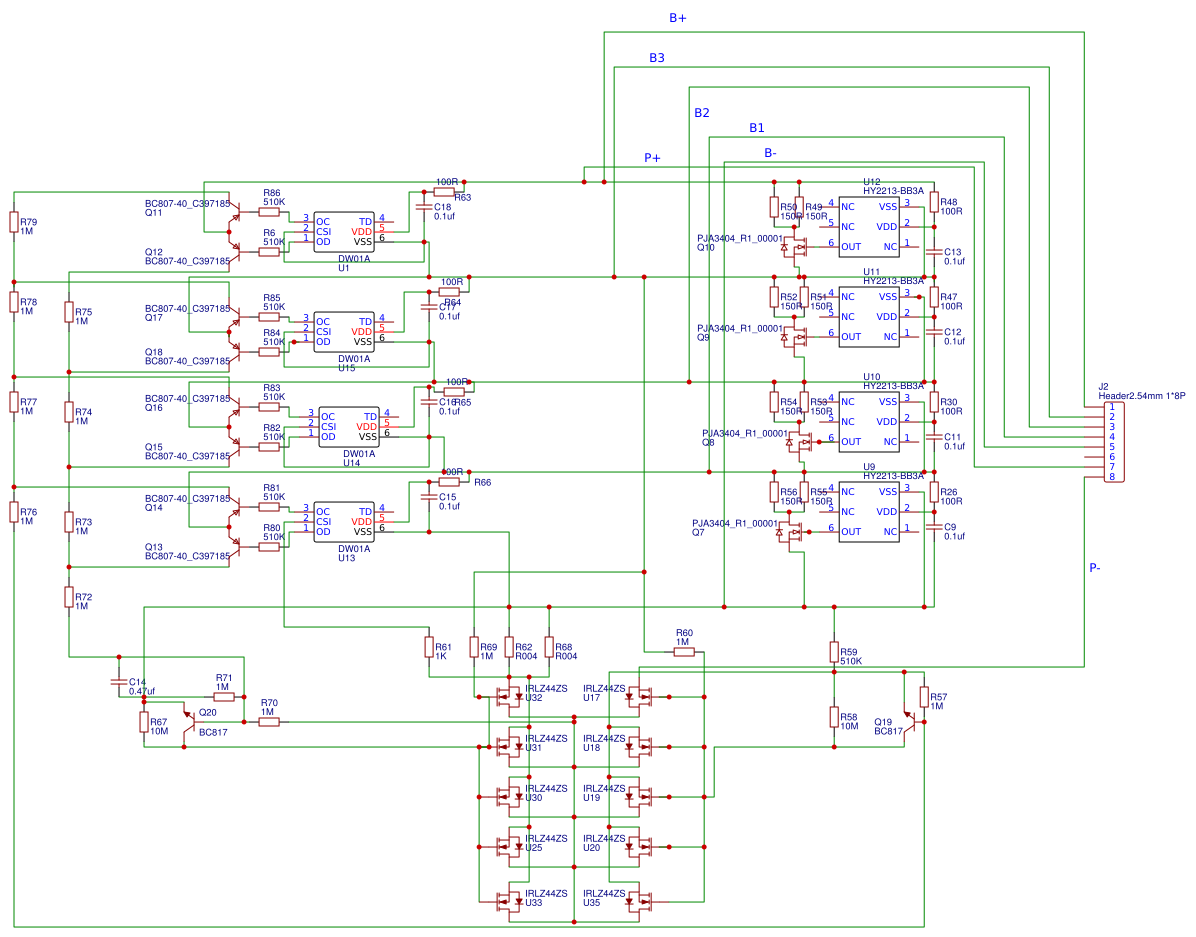JackB
10 W
I am trying to finish up an ebike setup and the last thing that is driving me crazy is to setup a led to indicate the battery is full while the charge is hooked up. My charger is just a dumb power supply and have lifepo4 cells.
I am using one of those cheap chinese bms boards that has mosfets that get turned off when a cell reaches max voltage (3.6v on this board).
I want to hack into this board to get an input voltage to an arduino, so when the mosfets get turned off I turn on the full led,
and if really ambitous turn off a relay to turn off the actual power supply. Anyone try this?
I tried to just tap into the mosfet gate pin and put in a voltage divider, but this board is using like 1M ohm resistors,
so the microprocessor chip has trouble reading the input. The bms board is designed to consume almost no power while its hooked up to the cells, otherwise it would drain the battery just sitting there. But I think the mosfet gate doesn't need that big a resistance as the gate just charges and shouldn't consume any current after that.
I know there are other ways to do all of this, but I need to get this thing finished like a week ago, so there is no time to order any parts and wait days to get them as all the local suppliers are long gone, so its online ordering only these days.
I do have a lot of surplus electronic parts pile, as was going to build a current sensor from an old rc battery charger board I have plenty of, but more hassle and parts, if I can just hack into the bms board seems so easy and simple, but so far, not the case.
hey so I have attached a schematic of one of these bms boards. Not sure its exactly the one I have but they are all very similiar.
You can see it has a chip for each cell that turns on a fet to get voltage to another fet that grounds the gate pin on the power fets that connect the input/output (P- to the pack B-).

I am using one of those cheap chinese bms boards that has mosfets that get turned off when a cell reaches max voltage (3.6v on this board).
I want to hack into this board to get an input voltage to an arduino, so when the mosfets get turned off I turn on the full led,
and if really ambitous turn off a relay to turn off the actual power supply. Anyone try this?
I tried to just tap into the mosfet gate pin and put in a voltage divider, but this board is using like 1M ohm resistors,
so the microprocessor chip has trouble reading the input. The bms board is designed to consume almost no power while its hooked up to the cells, otherwise it would drain the battery just sitting there. But I think the mosfet gate doesn't need that big a resistance as the gate just charges and shouldn't consume any current after that.
I know there are other ways to do all of this, but I need to get this thing finished like a week ago, so there is no time to order any parts and wait days to get them as all the local suppliers are long gone, so its online ordering only these days.
I do have a lot of surplus electronic parts pile, as was going to build a current sensor from an old rc battery charger board I have plenty of, but more hassle and parts, if I can just hack into the bms board seems so easy and simple, but so far, not the case.
hey so I have attached a schematic of one of these bms boards. Not sure its exactly the one I have but they are all very similiar.
You can see it has a chip for each cell that turns on a fet to get voltage to another fet that grounds the gate pin on the power fets that connect the input/output (P- to the pack B-).


